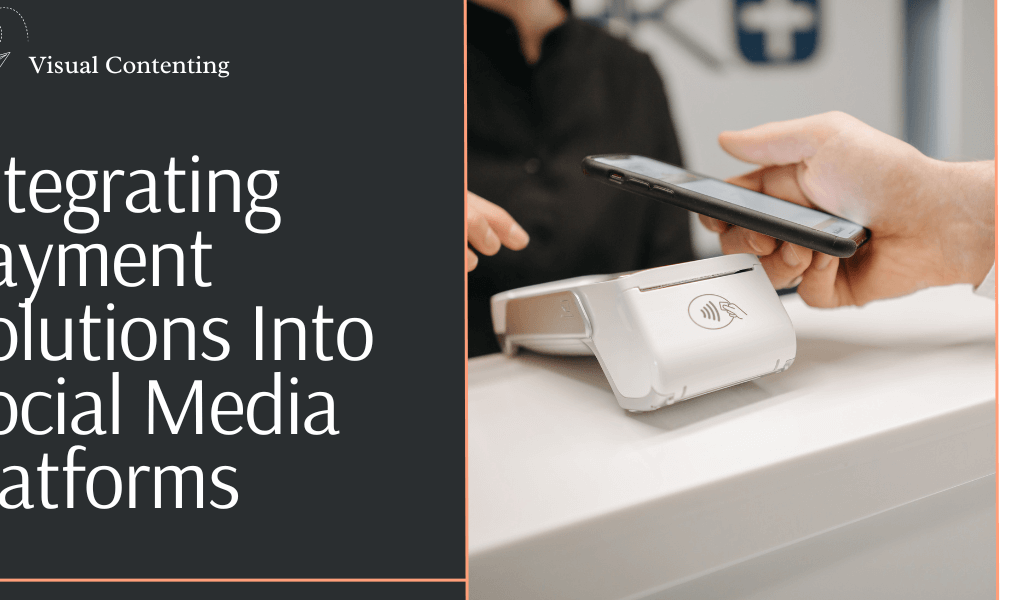Most marketers are well aware that the way people shop online has changed rapidly with the rise of social media usage. Ten years ago, social platforms were a way to share a few photos and connect with lost childhood friends and family members in different states. Today, the majority of people get on various social sites for news, entertainment, emotional connection and shopping.
Social media influencers capture the imagination of their followers and provide a perfect place to reach new customers and generate sales. Tapping into the power of immediacy allows social marketing campaigns to perform better as buyers purchase directly and can stay on the same site where they saw a video or article without bouncing to different locations to complete a sale.
Recent Social Commerce Changes
Keeping up with the shifting tide of digital shopping can give the most dedicated marketer a run for their money. Integrating payments with social media is one of the latest changes companies are using to ramp up sales in a competitive landscape. Statista estimates embedded finance revenues will top $230 billion by 2025.
With integrated payments, the user views a video and can immediately purchase the product without going to the manufacturer's website. The increased convenience and time savings are changing the way people shop online. Some of the earlier examples of cash payments on social media included Snapchat's Snapcash service. Other companies offered ways for people to send direct payments to family and friends. In 2020, TikTok allowed users to add a credit card and buy directly within the app.
Other options include third-party integrations on Facebook through partnerships with Stripe and PayPal. These partnerships allow businesses to offer products on their Facebook page without users ever leaving the site.
The Benefits of Integrating Payment Solutions Into Social Shopping
Although integrated payment solutions are still emerging, businesses are already reaping multiple benefits from adding them to their marketing efforts.
1. Simplifying Purchases
In 2023, around 40% of consumers used their digital wallets to make a payment, a 26% increase from 2020. Embedded shopping options allow customers to save a card to a single platform and pay for multiple purchases from various retailers without constantly having to input numbers.
2. Take Advantage of Impulse Buying
An old rule of thumb in sales is to get people to say yes while they’re standing in front of the salesperson. If they walk away, they’ll get distracted with something else and aren’t likely to return. Embedded payments allow companies to grab attention and make the sale while the presentation is still fresh in the user’s mind.
3. Personalize the Experience
One thing many social media sites have perfected is personalizing what they offer to users. The brands have complex algorithms that track user behavior and past browsing history. They serve content that matches the person’s interests.
Because the reels and ads they see connect with them on a deeper level, people who see a brand’s material are more likely to be the right target audience.
4. Lessen Checkout Steps
Shopping cart abandonment can be an issue for all types of online retailers but is particularly troublesome for smaller businesses, where a couple more sales can be the difference between success and failure.
With embedded finance, the user usually only clicks a few times, and the sale is complete. Because information is already stored on the third-party payment site or the social media platform, the buyer only has to confirm they want to make the purchase rather than repeatedly entering all the details from their credit card. They likely have their name, mailing address and other contact details in place, as well.
5. Enhance Analysis and Learn Buyer Behavior
Social media is at the forefront of tapping into the power of artificial intelligence (AI). Sites like Facebook use computers to sift through tons of data points and figure out what ads to serve to users that they’re most likely to respond to.
Brands such as Sephora are already experimenting with using AI to suggest additional products and personalize the experience. Over time, platforms sift through thousands of interactions for each person, sort them into actions and find the perfect mix of viewers for any given niche.
6. Improve Security
Keeping a website secure and protecting customers’ personal financial information can be tricky for smaller retailers without a lot of funds to throw at security experts. When brands utilize social media’s commerce options, they gain a multi-million dollar company’s top security features.
Rather than collecting and being responsible for encrypting data, the social media site already has strict encryption procedures in place. Big brands also monitor potential criminal activity and are ready to stop hackers before they gain access to sensitive information.
7. Comply With Regulations
Regulations about how companies collect and store personal information are stringent in some locations. The General Data Protection Regulation (GDPR) Act requires anyone doing business with European Union citizens to protect that data and define how they’ll use and store it. Even if all of a business’s customers reside in the United States, it’s best to ensure any online sales comply with the GDPR as it can help cover other regulations.
Facebook, Google and TikTok are already aware of the rules surrounding regulations and have protections in place that can prevent companies from being fined for making an error.
8. Leverage Social Proof
Numerous benefits arise when everything involving e-commerce resides in one or two places. Reviews can be integrated with storefronts, showcasing happy customers and driving further growth. Analytics are at the user’s fingertips, allowing marketing departments to see specifics for past campaigns and gather data about their target audience’s behavior across networks.
Around 5.45 billion people use the internet, and 5.17 billion of them are on some form of social media, putting around 63.7% of the global population as regular social media users. Offering social proof that users engage with a brand and mention it in their posts goes a long way toward referrals and word-of-mouth marketing.
9. Collaborate More Effectively
When businesses place their inventory in social media stores, they can collaborate more easily with influencers and engage their target audiences. Driving users to a post on social media where they can make an instant purchase ties into the immediacy of social platforms. Influencers can encourage their followers to take advantage of a time-limited offer.
The Future of Embedded Finance
With social media usage continuing to rise and businesses finding success through integrated payment solutions on social media, expect more features in the future. Social media companies will likely expand online shopping opportunities through the next several years.
The number of people shopping online continues a slow and steady increase. As people grow more accustomed to ordering things and waiting for them to arrive, expect e-commerce to expand. The younger generation is just coming into the workforce. Gen Z is the first generation raised completely with electronic devices and the internet. Expect things to change to accommodate their comfort level with the Internet of Things and online shopping.
Embedded finance is just starting to grow in popularity. It will be interesting to see where it takes online sales in the future.
Related Posts
Devin Partida writes about topics concerning tech and the internet. She is also the Editor-in-Chief of ReHack.com.







